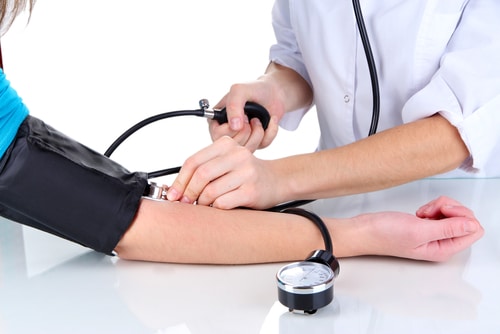
In simple terms, your blood pressure is a measure of the amount of pressure exerted against the walls of the blood vessels as blood is pumped by the heart throughout your body. Blood pressure on blood vessel walls can be likened to the pressure in a garden hose as water from a faucet flows through it.
Measuring Blood Pressure
Blood pressure is measured in “millimeters of mercury,” or mmHg. A blood pressure reading consists of two of these mmHg numbers – one over the other. The top number is referred to as the systolic blood pressure and it is the measure of pressure at its highest point as the heart contracts. The bottom number is the diastolic pressure and it is the measure of the pressure at its lowest point as the heart relaxes between beats.
Making Sense of the Numbers
Blood pressure rises and falls often depending on activities. Lifestyle factors such as stress and anxiety levels, intense exercise, poor posture, and inadequate sleep can all affect how high or low your blood pressure is at any given time. Because of this, a single reading is not an accurate measure of blood pressure. However, your blood pressure is considered “normal” if average readings fall below 120/80. Even if you are lucky enough to fall into this category, it is important to note that the risk of developing high blood pressure later in life is a whopping 90%. Currently, one in three people in the U.S are in some stage of hypertension.
• Prehypertension. Doctors say you are in the prehypertension stage when you have a systolic reading between 120 and 139 and a diastolic reading between 80 and 89. Numbers like these are a warning sign that you may be progressing on to full-blown hypertension. In the prehypertension stage, you may want to begin cutting out junk food, exercising more, and learning ways to deal with stress.
• Stage 1 hypertension. You are in stage 1 hypertension if you have a systolic reading between 140 and 159 and a diastolic reading between 90 and 99. Though most physicians feel like medication is needed at this point, aggressive lifestyle and dietary changes may be enough to bring blood pressure down to safer levels.
• Stage 2 hypertension. This stage is full-blown hypertension and is characterized by blood pressure readings that exceed 159/99. During this stage, you can expect to be put on medication and be encouraged to make radical dietary and lifestyle changes.
The Dangers of High Blood Pressure
High blood pressure is known as a silent killer because it can wreak havoc on the body for many years before symptoms appear. Over time, chronically high blood pressure can quietly damage arteries which can lead to heart attacks, aneurysms, and strokes. In most cases, high blood pressure does not produce noticeable symptoms until it goes above 180/110 which is known as hypertensive crisis. At this point, the sufferer may experience severe headaches, nosebleeds, and shortness of breath.
The Dangers of Low Blood Pressure
Though low blood pressure is not as common as high blood pressure, it is a very dangerous condition. However, since what is low for one may be normal for another, most doctors only consider blood pressure too low if it produces symptoms. The most common symptoms of low blood pressure are fainting or dizziness due to the lack of blood being transported to the brain.
If you suspect that your blood pressure may be too high or too low, it is best to begin monitoring it at home in addition to having it checked regularly by a physician. Home monitoring kits are inexpensive and easy to use. By monitoring your blood pressure over time, your doctor will be able to formulate a more accurate profile of your health.
Related Art
Is High-Intensity Exercise Better for Lowering Blood Pressure Than Moderate-Intensity Workouts?
Beyond Sodium: is Sugar What’s Raising Your Blood Pressure?
4 Things You Should Know about Exercising with High Blood Pressure
Can a Single Aerobic Exercise Session Boost the Health of Your Heart?
Non-Drug Treatments for High Blood Pressure: Which Ones Are Backed by Science?

